Most Beautiful Places in the World
The Great Wall of China: A Monument to Power and Perseverance

The beautiful Great Wall of China was constructed over many years to defend China’s northern frontiers against incursions. It has been designated as a UNESCO World Heritage Site and serves as a key icon of Chinese history and culture.
The Great Wall of China stretches over 13,000 miles from the east coast to the Gobi Desert. This impressive feat of engineering has earned it a place as one of the Seven Wonders of the World.
In addition to its impressive length, the Great Wall of China is also famous for its rich history. It was first built during the Warring States period in ancient China and has been rebuilt, repaired and expanded many times over the centuries by various dynasties and emperors. The Great Wall of China has played a crucial role in the defense of China and is a source of pride for the Chinese people.

The Majestic Pyramids: Ancient Wonders of Egypt
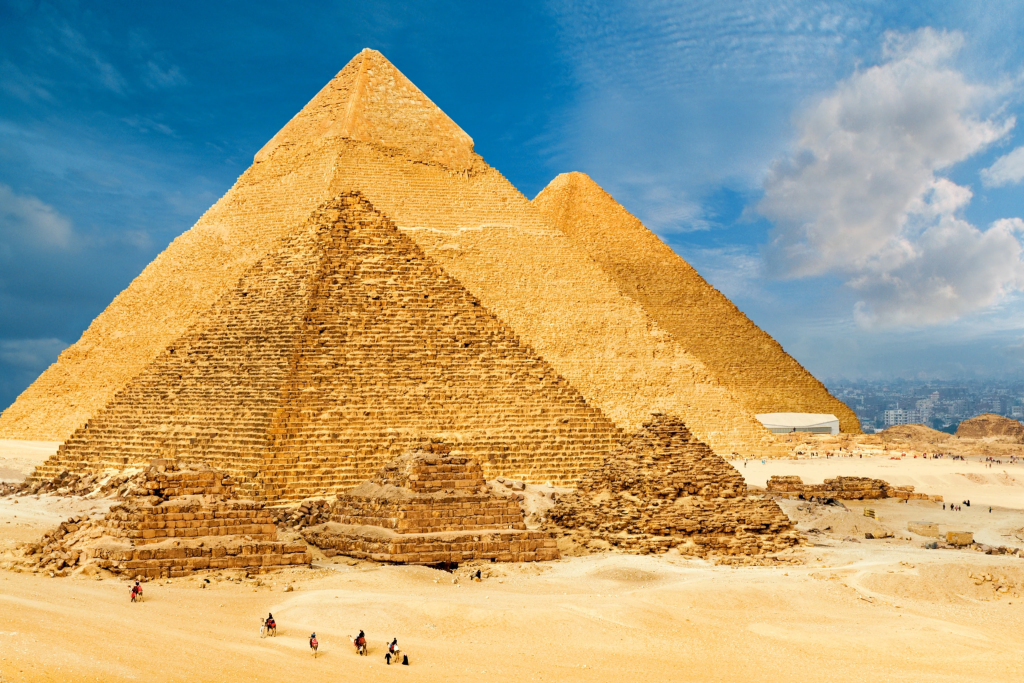
Ancient Egyptian buildings known as the Pyramids of Giza have captivated people’s imaginations for countless years. They are recognised as one of the Seven Wonders of the Ancient World and are among the oldest and most well-known pyramids in the world.
It is undeniable that the age of these pyramids contributes to their attractiveness. The pyramids, which were built approximately 2500 BC, are more than 4,500 years old and serve as a reminder of ancient Egypt’s advanced engineering and building techniques.
Not to mention their size! The tallest of the three, The Great Pyramid of Giza, stands over 147 metres high and has a base that covers about 13 acres. It’s one of the biggest constructions ever erected by humanity and a truly stunning sight.
Another thing that makes the Pyramids of Giza famous is its importance in both culture and history. They were constructed as tombs for the Pharaohs of ancient Egypt to safeguard their bodies and belongings after death. They were frequently embellished with exquisite carvings and paintings that demonstrated the Pharaoh’s riches and authority.
Last but not least, tourists from all over the world who want to learn more about ancient Egyptian civilization flock to the Pyramids of Giza, a well-known tourist site. They have come to represent Egypt and its lengthy history because of their appearances in literature, film, and other forms of art.
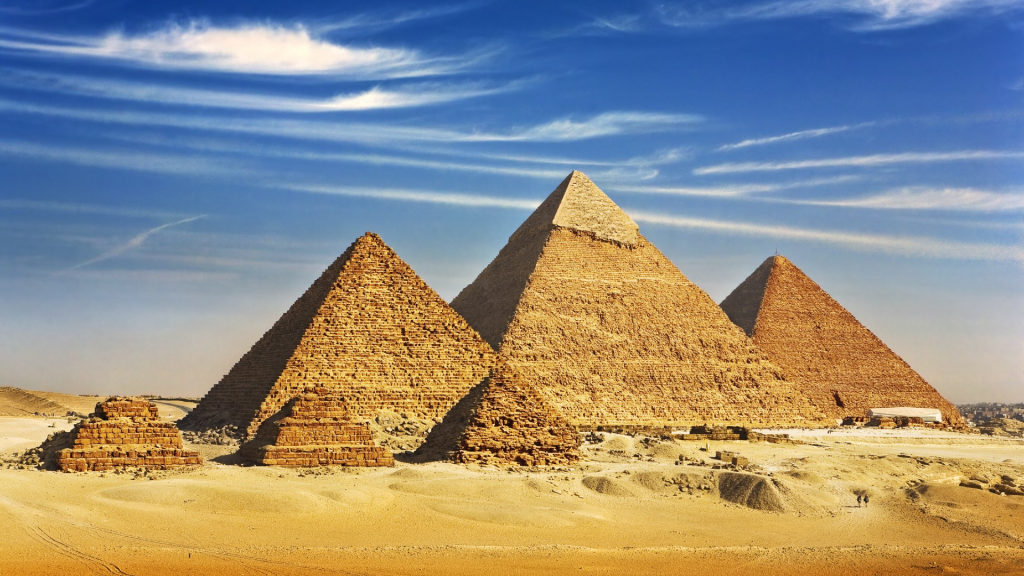
The Majestic Marvel of the Taj: A Palace of Love and Beauty

One of the most stunning structures in the world and a representation of India’s lengthy history is the Taj Mahal. The Taj Mahal was constructed by the Mughal Emperor Shah Jahan in honour of Mumtaz Mahal, who passed away in 1631 while giving birth.
White marble was used to construct the Taj Mahal, which features elaborate carvings. It is built in the Mughal architectural style and is surrounded by lovely gardens.
Poets, artists, and musicians have drawn inspiration from the Taj Mahal throughout the ages since it is viewed as a representation of love and devotion. It is a significant aspect of Indian culture and is shown on the coinage of that country.
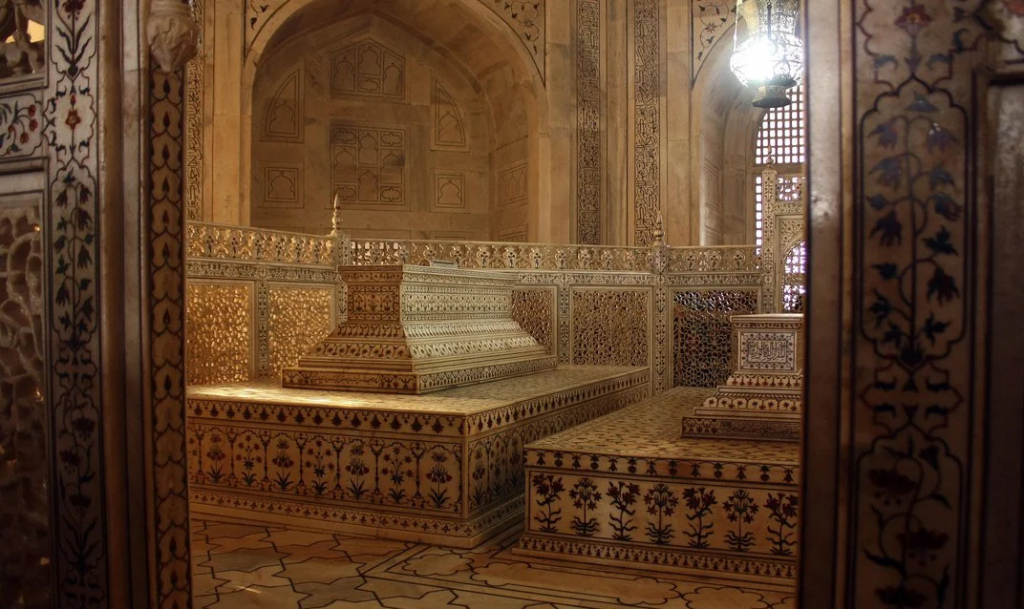
The Taj Mahal is well-known for its tale as well as its aesthetic appeal and cultural significance. The Taj Mahal was allegedly commissioned by Emperor Shah Jahan as a memorial to his bride because he was so distraught over her passing. Many of the labourers and artisans who worked on the Taj Mahal project perished before it was finished, and it is reported that he spent a significant portion of his riches on its construction.
Despite the legend and its cultural significance, the Taj Mahal is famous mostly for its stunning beauty and architectural design. It is a testament to the skill and creativity of the craftsmen who built it and is considered one of the greatest examples of Mughal architecture in the world.

The Colosseum: Rome’s Ring of Glory

Rome, Italy’s Colosseum is a sizable amphitheatre. One of the most well-known landmarks in the world, it is regarded as one of the finest examples of Roman engineering and construction.
Vespasian, the Roman Emperor, oversaw the construction of the Colosseum, which was finished in 80 AD. It was utilised for a range of open occasions, such as fake naval wars, gladiator fights, and animal hunts. Due to its vastness, creative use of arches, and capacity for 50,000 spectators, the Colosseum was regarded as a marvel of its time.
The Colosseum has undergone numerous renovations throughout the ages and has sustained substantial damage as a result of natural calamities and looting. Despite this, it continues to be one of Rome’s most identifiable landmarks and a top tourist destination.
Due to its historical and cultural significance as a symbol of the might and majesty of the Roman Empire, the Colosseum is well known. In addition, it is well known for its cutting-edge engineering methods and architectural style. The Colosseum is a representation of the enduring legacy of Roman civilisation and has served as an inspiration for several stadiums and amphitheatres all over the world.
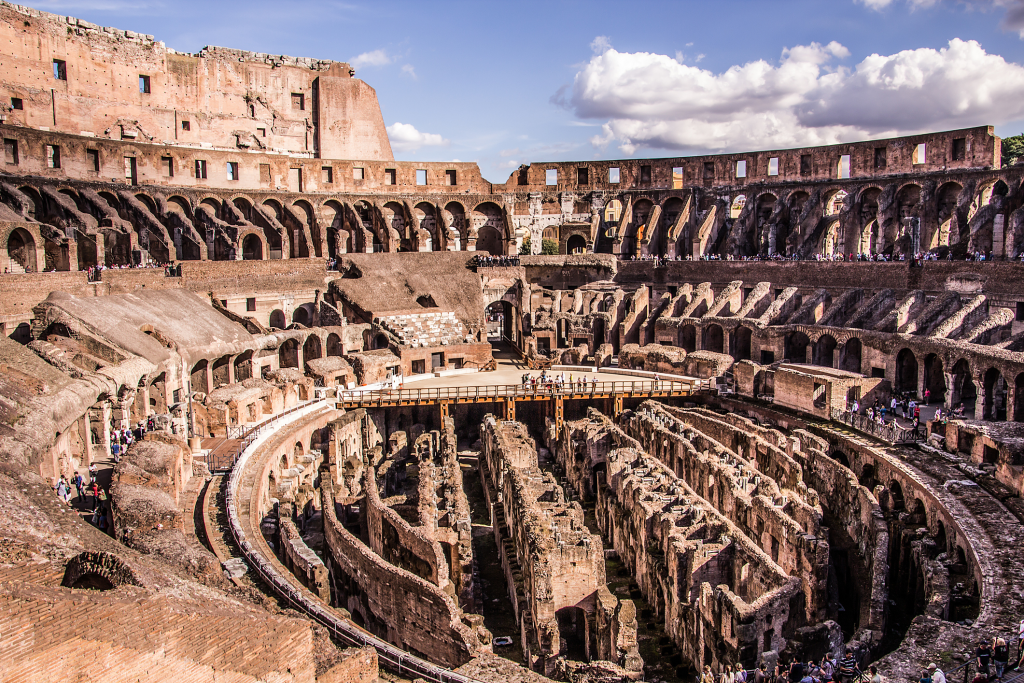
Stonehenge: The Mysterious Monoliths of England
The mysterious structure known as Stonehenge, which is situated in Wiltshire, England, has fascinated humans for many years. It is a ring of enormous stones, each of which stands 13 feet tall and weighs many tonnes.
The remarkable engineering of Stonehenge is one factor in its notoriety. The stones were laid with amazing precision despite the lack of contemporary equipment and technology, making it a true marvel of human ingenuity and ability. Additionally, the fact that Stonehenge’s precise purpose and construction method are still a mystery only adds to its fascination and mystique.
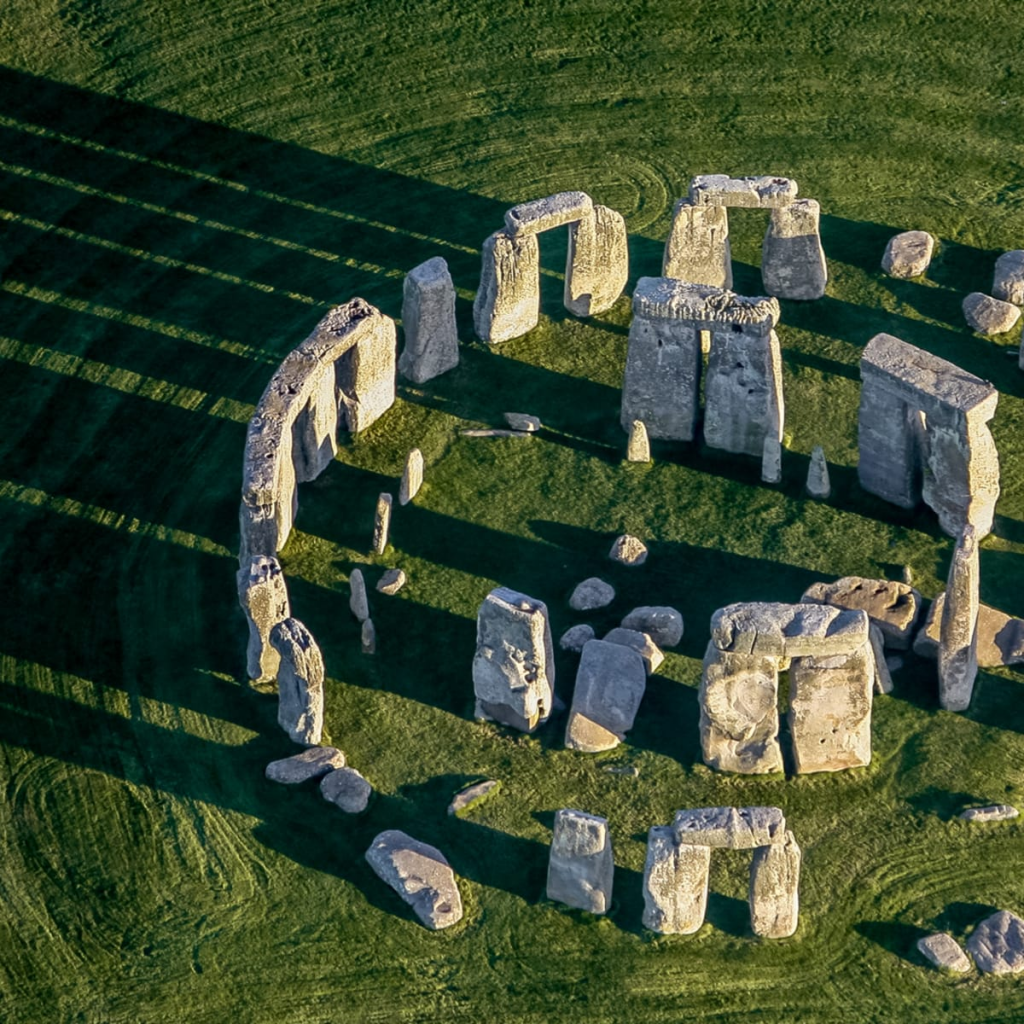
Stonehenge has also captured people’s imagination due to its mysterious history. No one really knows why it was built or what it was used for, which has fueled a lot of theories and speculations over the years. Some folks think it was a place of worship or a hub for astronomical observations, while others believe it may have served as a burial ground or a center for healing.
Stonehenge is also a symbol of the ancient and enigmatic past of the British Isles. It draws in tourists from all over the world and has been the focus of numerous books, movies, and TV shows. It holds immense cultural and historical significance, and is legally protected as a prized ancient monument.
Dive into the Colors of the Great Barrier Reef: A Marine Wonderland
The Great Barrier Reef, located off the coast of Australia, is a breathtaking display of nature’s artistry. It is home to an abundance of marine life, including a dazzling array of fish, mammals, birds, and more, all living and thriving in its vivid coral.

This magnificent reef is a true marvel, renowned for its stunning beauty and critical importance to the ecosystem. Visitors from all over the world come to admire its vibrant hues and diverse marine life, and for local communities, the reef is a source of both food and livelihood.

However, despite its many wonders, the Great Barrier Reef is facing serious threats from climate change, pollution, and overfishing. This delicate ecosystem is at risk, and its uncertain future serves as a reminder of the vital need to protect our natural resources.

But there is hope. Conservation and preservation efforts are underway, and everyone can play a role in ensuring that the Great Barrier Reef remains a masterpiece for generations to come. As one of the world’s most well-researched coral reef systems, the Great Barrier Reef has played a crucial role in advancing our understanding of marine ecosystems and the impact of human actions on the environment. It is a science superstar that deserves our protection and care.

The Galápagos Islands: A Natural Haven and Scientific Treasure
Nestled 600 miles off the coast of mainland Ecuador, the Galápagos Islands are a true gem of the South American coast. With 13 large islands, 6 smaller islands, and over 40 islets, this archipelago is a melting pot of biodiversity, housing an array of plant and animal life found nowhere else on the planet.

From the towering Galápagos pine to the delicate Galápagos daisy, the islands are dotted with unique plant species. But it’s the animals that truly steal the show. The Galápagos tortoises, with their long lifespans and distinctive shells, are a sight to behold, while the marine iguanas, found only on these islands, have adapted to their oceanic environment in a way that truly boggles the mind. And let’s not forget about the famous Galápagos finches, whose variation in beak size and shape was so pivotal in Charles Darwin’s theory of evolution.

Indeed, the Galápagos Islands hold a special place in scientific history. In 1835, naturalist Charles Darwin visited the islands as part of a scientific expedition and was struck by the unique and varied plant and animal life he observed there. His observations and collections from the islands played a critical role in the development of his theory of evolution by natural selection, published in his seminal work, “On the Origin of Species.”

For visitors, the Galápagos Islands offer a chance to witness the beauty of nature in its rawest form, from the sun-drenched landscapes to the teeming wildlife. It’s a true paradise for nature lovers and a scientific treasure for generations to come.
Explore the Mystical World of Easter Island: The Island of the Enigmatic Moai
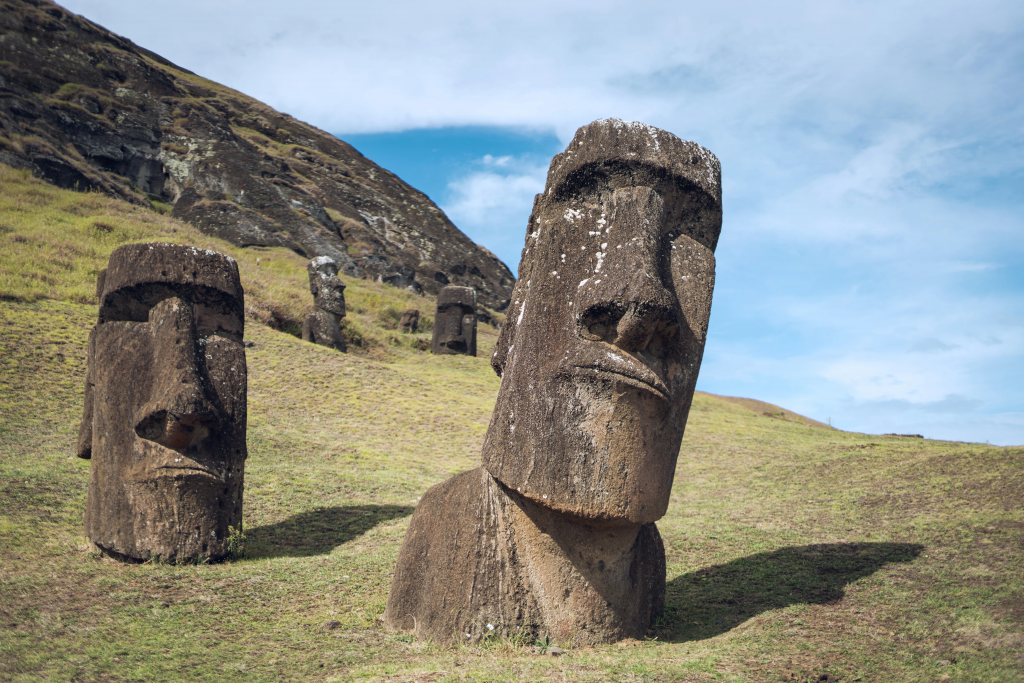
Easter Island, a remote speck of land in the Pacific Ocean, captivates visitors with its iconic moai. These massive stone statues, numbering over 900, tower over the island’s shores, ranging from a towering 10 feet (3 meters) to an awe-inspiring 30 feet (9 meters) in height.
These masterpieces of engineering and art are the result of the Rapa Nui people’s ingenuity, who carved the statues out of volcanic rock before transporting and erecting them on the shores of the island. Although the exact method used to move these behemoths remains shrouded in mystery, it is believed that a combination of sleds and ropes were utilized.
Easter Island’s rich history and mystery also adds to its allure. The Rapa Nui people settled on the island around 1200 CE, constructing the moai and other structures over the next several centuries, before the civilization eventually collapsed. The reason for the collapse remains unclear, with theories pointing to overpopulation, resource depletion, environmental factors, and inter-clan conflicts.
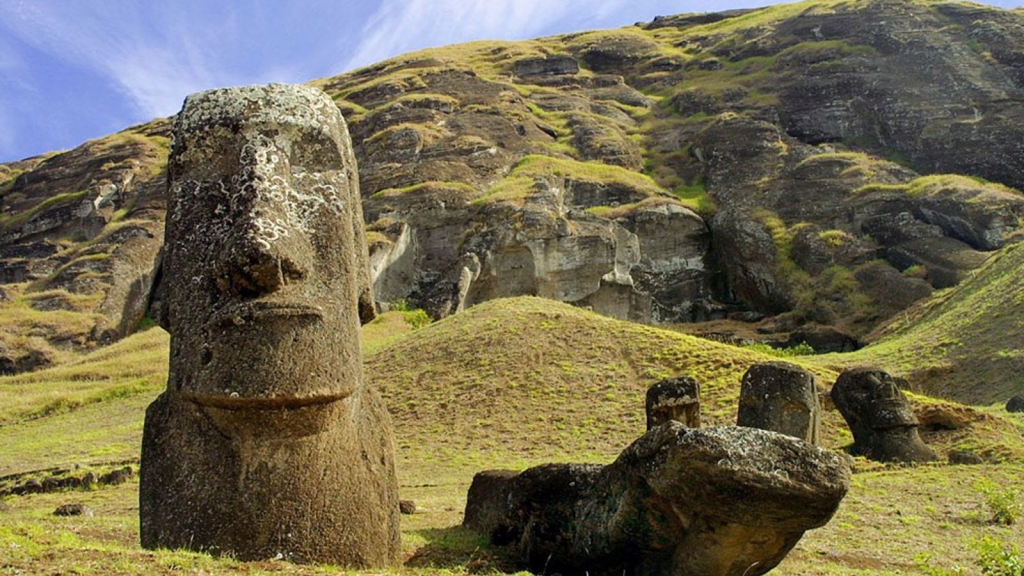
Visitors to Easter Island are in for a treat, as they can explore its stunning beaches, delve into its rich culture, and uncover its fascinating history. The island is also a protected World Heritage site by the government of Chile, ensuring that its cultural and historical significance is preserved for future generations.
In a nutshell, Easter Island is an enigmatic and captivating destination, renowned for its moai, rich history, and culture. Visit and be awed by the impressive feats of engineering and art, and delve into the mysteries of a fascinating civilization.
The Acropolis of Athens
Nestled on a hilltop overlooking the bustling city of Athens, the Acropolis stands as a timeless symbol of ancient Greek civilization. This citadel, home to several awe-inspiring structures, has been attracting visitors for centuries and continues to be one of the world’s most famous landmarks.
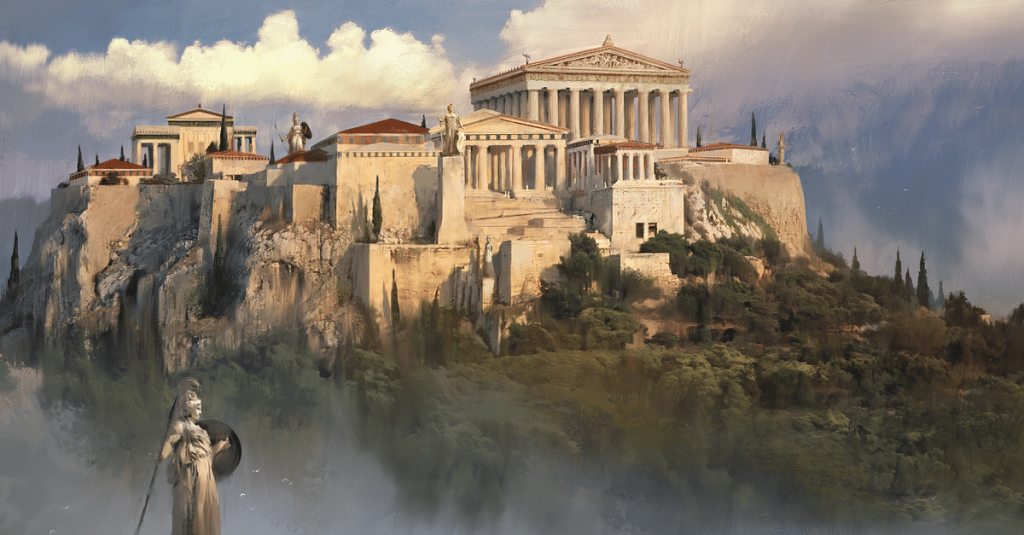
The Acropolis has a long and rich history. It was originally a natural fortress, with steep cliffs protecting it on three sides. In the Bronze Age, the Acropolis was home to a palace and other buildings. In the 5th century BCE, the Athenians transformed the Acropolis into a cultural and religious center. They built the Parthenon, a temple dedicated to the goddess Athena, as well as the Propylaea, the Erechtheion, and the Temple of Athena Nike. These buildings were designed by the famous Greek architects Iktinos and Kallikrates, and are considered masterpieces of classical Greek architecture.
The Parthenon is the most famous building on the Acropolis. It is a temple dedicated to Athena, the patron goddess of Athens. The temple is made of marble and is adorned with sculptures and reliefs depicting scenes from Greek mythology. The Propylaea is a grand entrance to the Acropolis, while the Erechtheion is a temple dedicated to the cult of Athena and the god Poseidon. The Temple of Athena Nike is a small temple dedicated to the goddess Athena Nike, the goddess of victory.

The Acropolis has played a significant role in the history of Athens and Greece. It was a center of political, cultural, and religious life in ancient Greece. It was also a symbol of the power and prosperity of the Athenian Empire. Today, the Acropolis is a major tourist attraction and is visited by millions of people each year. It is a UNESCO World Heritage Site and is considered one of the most important historical and architectural landmarks in the world.
The Timeless Beauty of the Sagrada Familia: Barcelona’s Iconic Landmark
Nestled in the heart of Barcelona, Spain, lies one of the most captivating and awe-inspiring structures of all time, the Sagrada Familia. Designed by the legendary architect Antoni Gaudi, this church is a breathtaking masterpiece that has captured the hearts and minds of millions of people from all over the world.
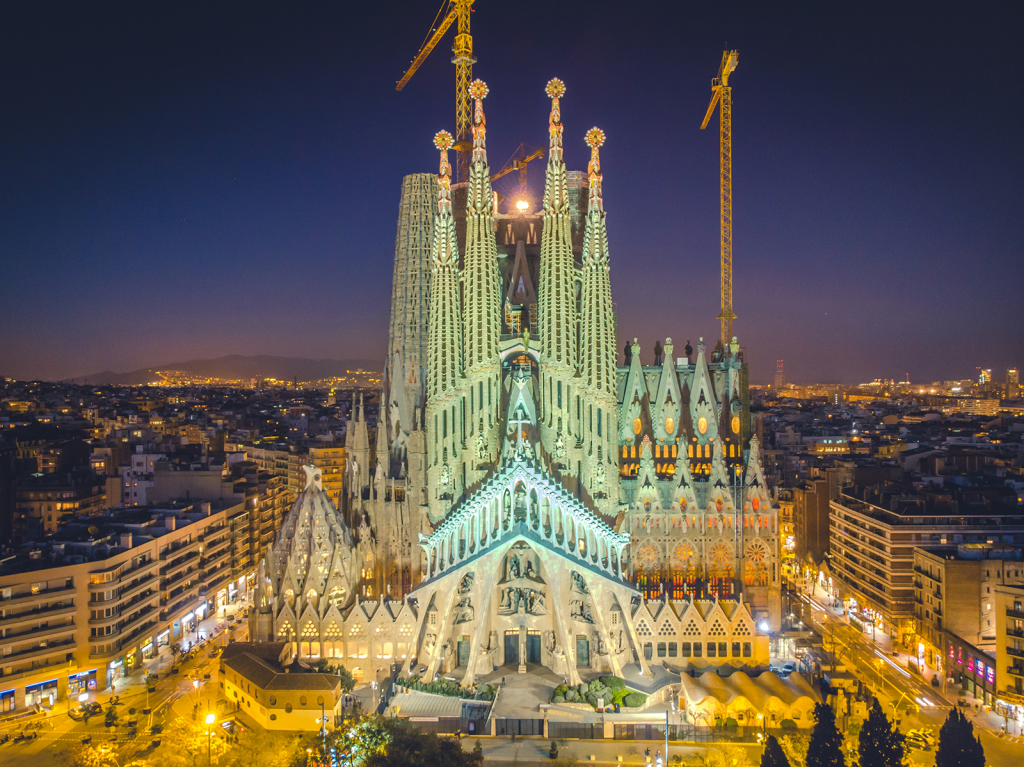
Over 130 years in the making, the Sagrada Familia stands as a symbol of the city’s rich history and cultural heritage. When Gaudi took over the project in 1883, he imbued it with his unique and intricate architectural style, combining elements of Gothic and Art Nouveau. Even after his death in 1926, a team of architects have continued to work on the project, following Gaudi’s original plans and models to bring his vision to life.

Another reason for its fame is its intricate and ornate facades and spires. The church has three facades, each with its own unique design. The Nativity Façade, which faces the east, is the oldest and most ornate of the three. It features sculptures and carvings depicting scenes from the life of Jesus, as well as a large central portal that is decorated with intricate floral patterns. The Passion Façade, which faces the west, is less ornate than the Nativity Façade, but still features a number of sculptures and carvings. The Glory Façade, which faces the south, is the most modern of the three and is currently under construction.

One of the most impressive aspects of the Sagrada Familia are its three ornate facades. Each one boasts its own unique design, starting with the Nativity Façade facing the east, which is the oldest and most elaborate. It is adorned with sculptures and carvings depicting scenes from the life of Jesus, along with a magnificent central portal that is decorated with intricate floral patterns. The Passion Façade, facing the west, is slightly less ornate but still features a number of beautiful sculptures and carvings. Meanwhile, the Glory Façade, facing the south, is the newest and most modern of the three and is still under construction.
Another reason the Sagrada Familia is so famous is due to Gaudi’s masterful use of light. The church is bathed in natural light that filters through the colorful stained glass windows, creating a peaceful and serene atmosphere inside. Gaudi also used light to create the illusion of movement, with the sun reflecting off the walls and giving the impression of shifting patterns and shapes.
The Great Sphinx: An Enigma Wrapped in Mystery
Do you know anything about the Great Sphinx of Giza? One of the most recognised and enduring representations of ancient Egypt is this enormous statue. The origins and purpose of this monument, which has been cloaked in mystery for thousands of years, are still up for debate and conjecture.
The Great Sphinx, which is enormous and guards the Giza Pyramids, is incredibly impressive. It is carved out of solid limestone and is more than 240 feet long and 66 feet tall. Its head is that of a pharaoh, replete with a crown and a beard, while its body is that of a lion.

Who, though, and why did the Great Sphinx get built? The enigma arises from this. Some claim that it was constructed approximately 2500 BC, during the reign of Pharaoh Khafre. Others think it goes back even further, to the time of Khafre’s older brother, Pharaoh Djedefre. Others still think it was constructed by the legendary Atlantean civilisation. In actuality, no one is completely certain.

But it is understood that in ancient Egypt, the Great Sphinx represented strength and defence. Its enormous size was intended to awe and revere everyone who saw it because it was thought to protect the pharaohs in their afterlife.
The Great Sphinx has endured the test of time despite its age. Even though it has suffered damage from the elements and has been looted for its priceless stone, it still stands tall as a tribute to the creativity and ability of the ancient Egyptians.
The Great Sphinx is, in essence, a mystery within a mystery. One thing that cannot be disputed is that it is one of the most identifiable and enduring symbols of ancient Egypt, regardless of its origins, function, or architects. Whenever you are in Giza, make sure to stop by this stunning structure. You won’t be sorry.


A Tour of History at the Louvre
Imagine yourself preparing to set out on a voyage through time in Paris, the city of love and lights. You move in the direction of the Louvre Museum, and as you get closer, you can feel your enthusiasm rising. You are about to see one of the world’s finest collections of art and history.
The Louvre is not your typical museum. It combines the qualities of a palace, a fortress, and a masterpiece. You’ll feel as though you’ve entered a another universe the moment you walk inside because of the museum’s extensive history and collection of works of art. The Louvre exhibits the finest pieces of art from all over the world, spanning time periods from the Renaissance to the ancient civilizations of Egypt and Greece.
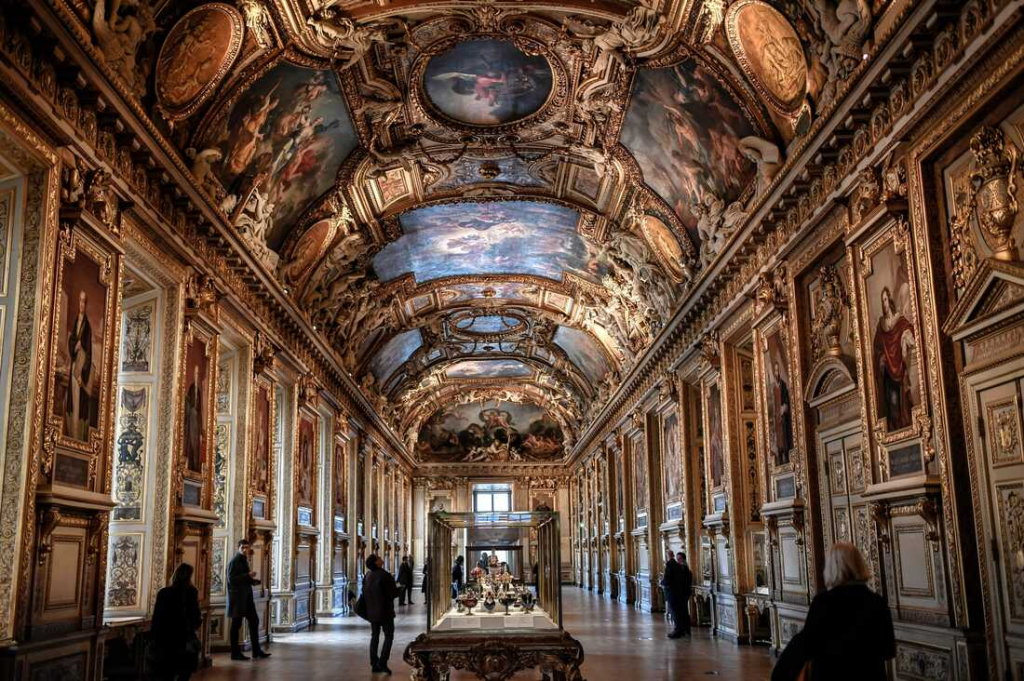
Oh, and the art! The artwork on show is breathtaking in its talent and beauty. You’ll be in awe of the artists that created amazing works of art, from the mysterious smile of the “Mona Lisa” to the breathtaking beauty of the “Venus de Milo.”
But art isn’t everything at the Louvre. The museum itself is an artistic creation. You won’t be able to stop gasping at its magnificent architecture and elaborate design. And what about the renowned glass pyramid at the entrance? That is a contemporary addition that melds perfectly with the historic building, giving this beautiful museum a dash of modern flair.
Discovering the Heart of Russian Power: A Tour of the Kremlin and Red Square

The Kremlin and Red Square, two of Russia’s most recognisable sites, are the pinnacle of the nation’s extensive historical and cultural legacy. The Kremlin, which translates to “fortress inside a city,” houses the Russian president and has long been the centre of the country’s political power. On the other hand, Red Square is a busy public area where some of the most important events in Russian history have taken place.
Moscow’s Kremlin was initially constructed as a wooden stronghold in the 12th century to defend the city from attacks by outside forces. The Kremlin has undergone numerous alterations and additions throughout the ages; the current brick building dates from the late 15th century. One of the biggest and most spectacular fortresses in the world, the complex is made up of numerous palaces, churches, museums, and administrative structures.
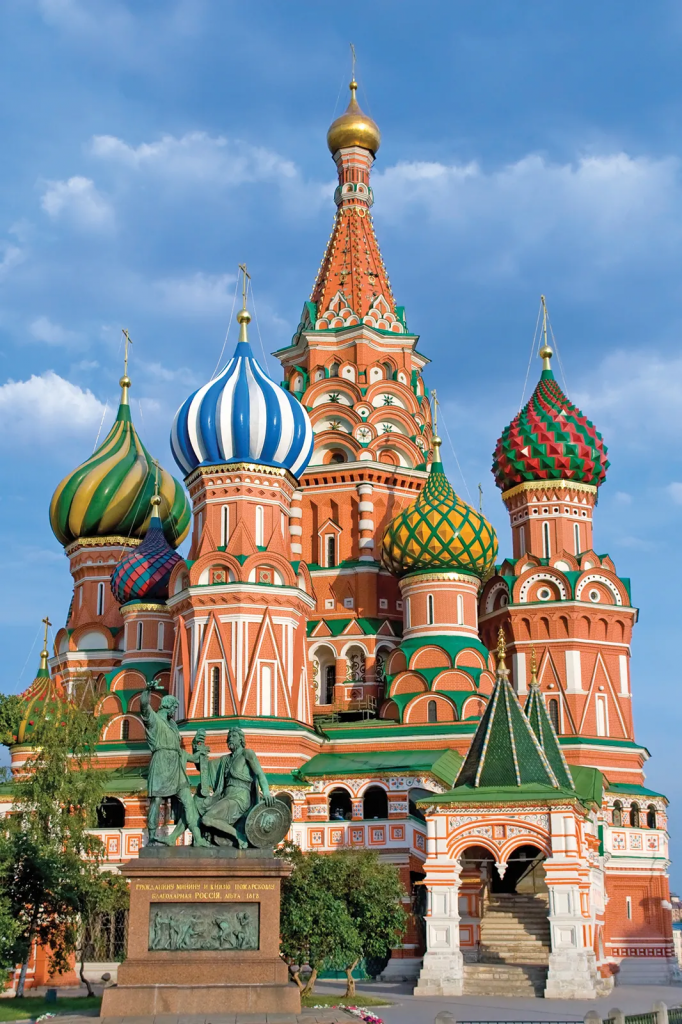
The Ivan the Great Bell Tower, which dominates the skyline and is a symbol of the city, is one of the Kremlin’s most spectacular structures. Climbing the tower will reward visitors with amazing views of the city, including Red Square and the surrounding areas. The magnificent Assumption Cathedral, the Kremlin’s oldest cathedral and a masterpiece of Russian Orthodox architecture, is another must-see destination.

Red Square, a sizable open area outside the Kremlin walls, is the heart of Moscow and a representation of the entire nation. The 15th-century square has witnessed numerous historic occasions, including as coronations, military parades, and demonstrations. Additionally, it is the location of some of the most well-known structures in Russia, such as the GUM department store, the State Historical Museum, and St. Basil’s Cathedral.
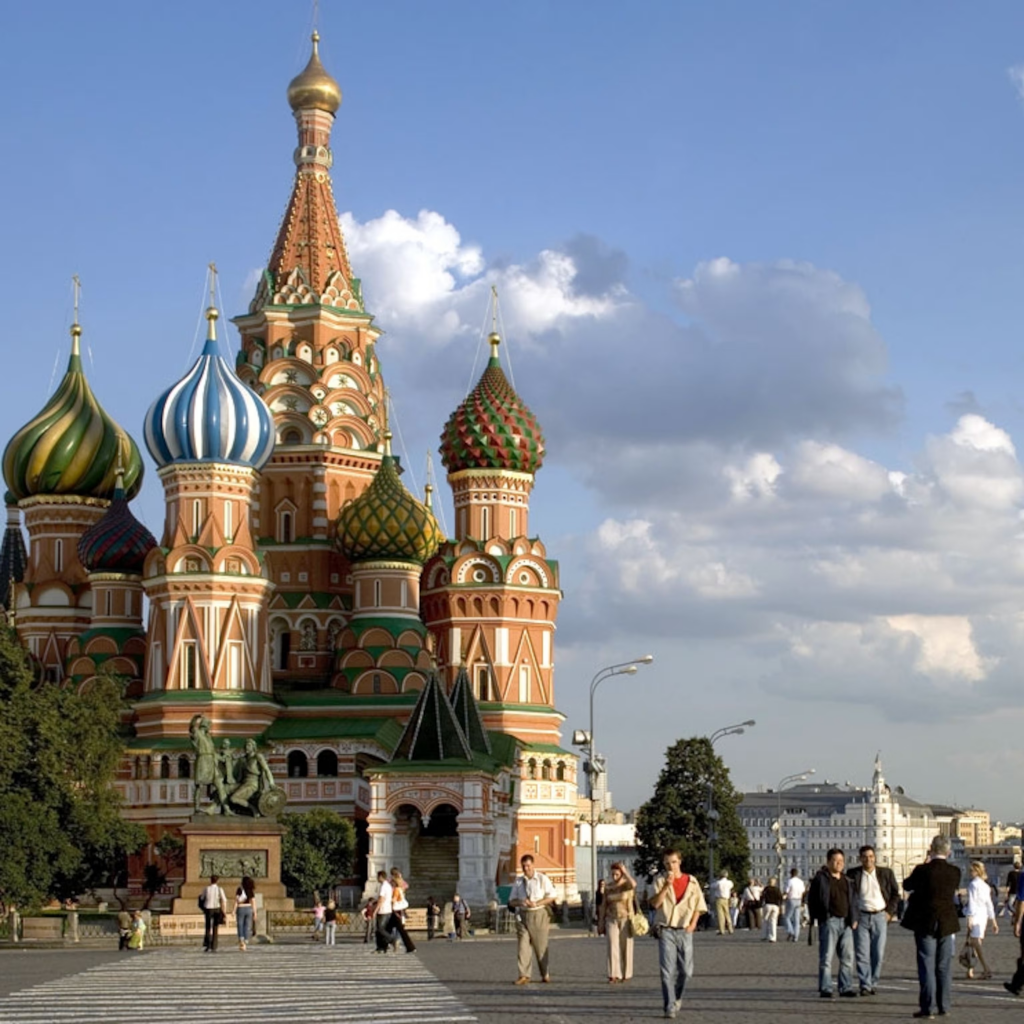
One of the most famous monuments in Russia is St. Basil’s Cathedral, with its vibrant onion domes and exquisite construction. The cathedral is a genuine gem of Russian architecture. It was constructed in the 16th century to commemorate Ivan the Terrible’s triumph over the Mongol invaders.
Sydney’s Crown Jewel: A Look Inside the Iconic Opera House
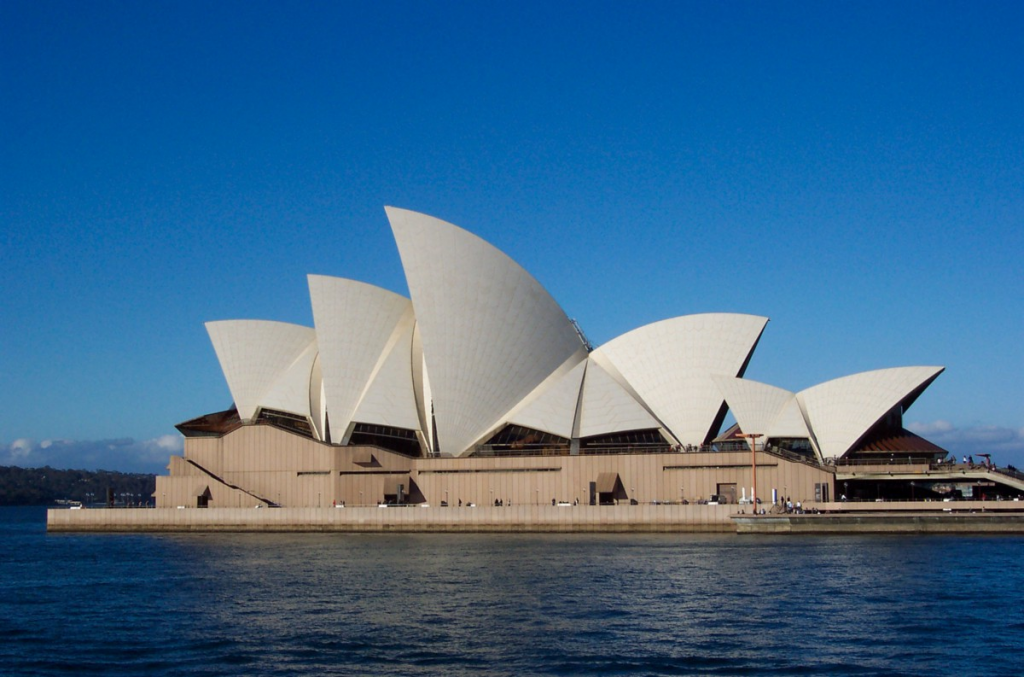
The Sydney Opera House, which was created by Danish architect Jrn Utzon and inaugurated in 1973, is a masterpiece of contemporary construction. The building’s distinctive shell-like features, composed of steel and white tiles, soar into the sky and stand out beautifully against Sydney Harbour’s azure seas.
The Sydney Opera House was constructed as a venue for performing arts, such as ballet, opera, and theatre. The structure houses five performance spaces, including the Concert Hall, where the Sydney Symphony Orchestra performs, and the Opera Theatre, where the Australian Opera and Ballet stage their productions.

The Sydney Opera House is a representation of Australia’s architectural prowess as well as its cultural history. The structure’s innovative design continues to influence architects and designers around the globe.
Visitors to the Sydney Opera House can enjoy a variety of activities, including guided tours that take guests inside the venue’s performance rooms and dining in one of the eateries or cafes. Locals and visitors alike frequent the structure to take in the beautiful views of Sydney Harbour.

The Sydney Opera House is frequently mentioned on lists of destinations that tourists absolutely must see because it has become a hallmark not just in Australia but all throughout the world. The Sydney Opera House is a must-see location for everyone who enjoys art, architecture, or simply appreciates beauty and history.
Stepping Back in Time: A Journey to the Former Cathedral and Mosque, Hagia Sophia
Istanbul, Turkey is home to the Hagia Sophia, a stunning historical structure. It’s a building that has stood the test of time for more than 1,500 years and has seen history take place right in front of it.
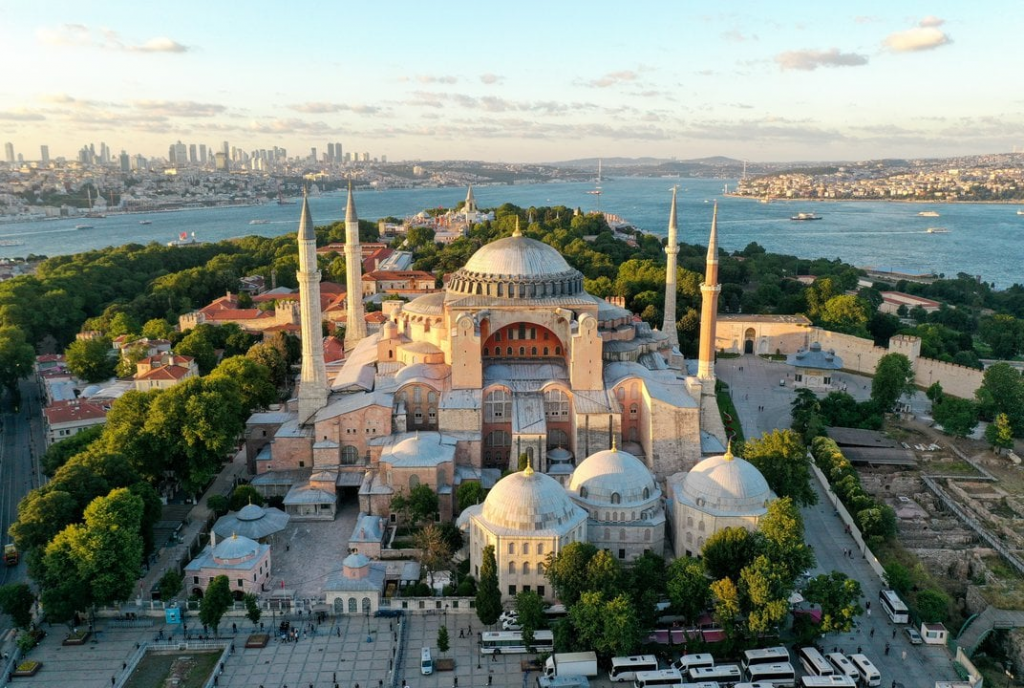
For over a thousand years, the Eastern Orthodox Church’s centre was the Hagia Sophia, which was first built as a church in the sixth century. It underwent conversion into a mosque after the Ottoman Empire conquered Constantinople in the 15th century, where it stood for roughly 500 years.
As a museum and a representation of Istanbul’s rich cultural history, the Hagia Sophia is currently. A few examples of the magnificent Byzantine architecture that guests can admire include the massive dome of the main hall and the lovely mosaics and frescoes that adorn the walls and ceilings.
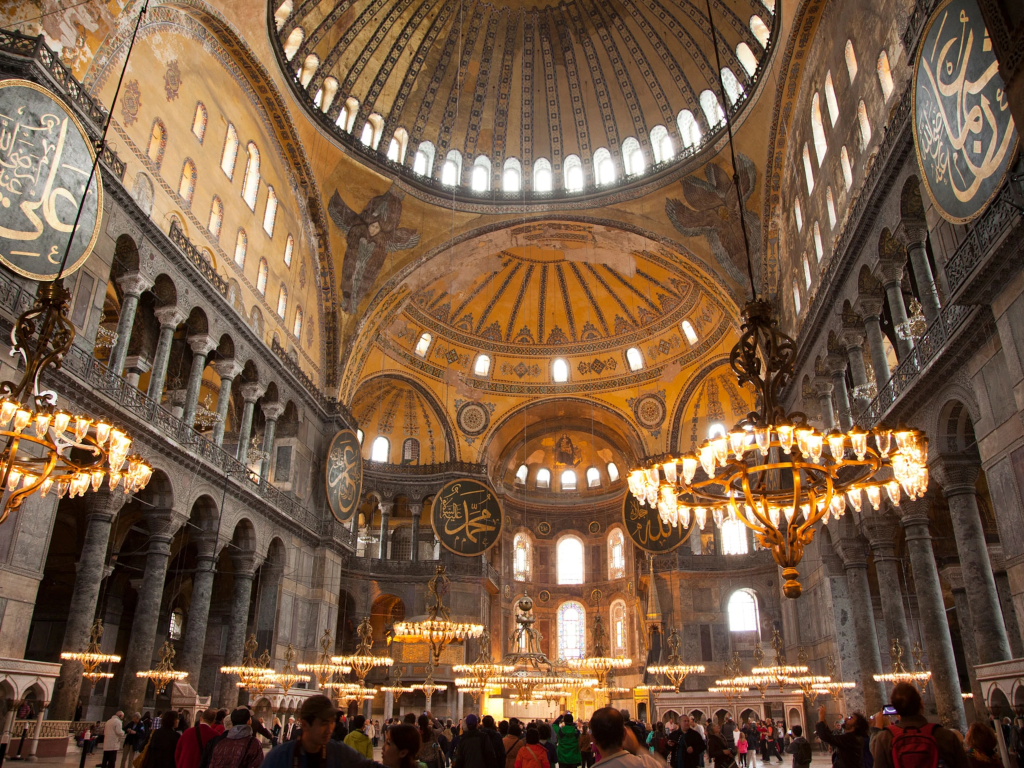
But the Hagia Sophia is much more than just a museum. As a symbol of Turkey’s historic and rich history, it holds a special place in the hearts and imaginations of people from all over the world. Anyone who appreciates history, art, or simply the wonder of beauty and creation must visit the Hagia Sophia.
The Hagia Sophia is also debatable and a source of dispute. Recent conversion of the building from a museum to a mosque by the Turkish government provoked protests and anger around the world. Despite its current condition, the Hagia Sophia is still a beloved site that will fascinate tourists for a very long time.
The Opulence of French Royalty: Exploring the Palace of Versailles
Oh, the Palace of Versailles! What a grand and enormous place this is! Some of the most important events in French history have taken place at the Palace of Versailles, a stunning architectural feat located just outside of Paris, France.
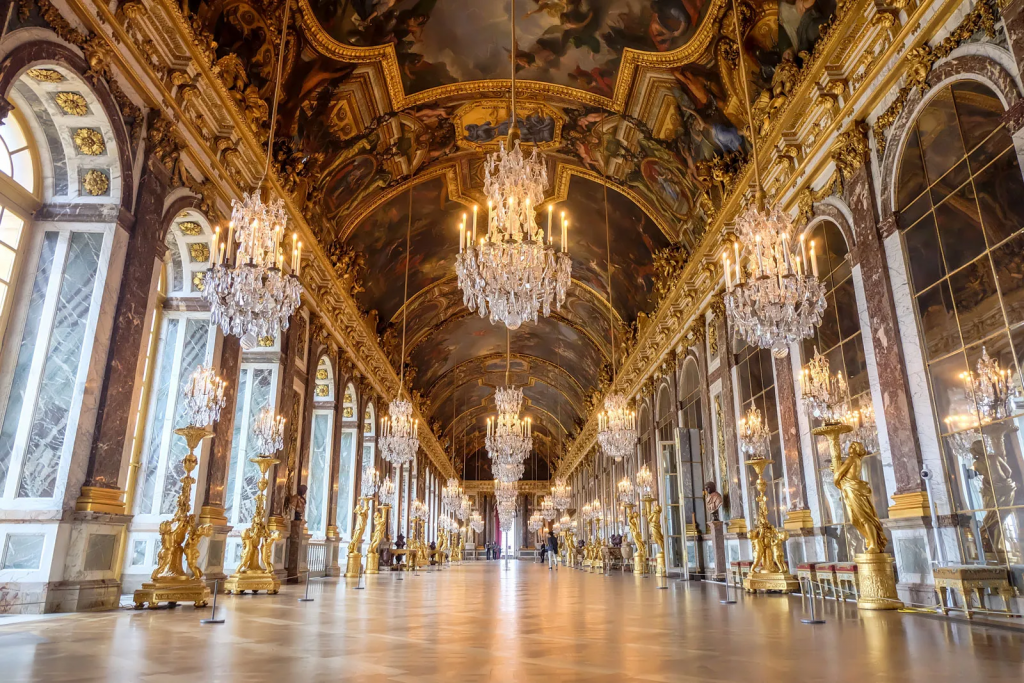
King Louis XIII originally had the Palace of Versailles built as a hunting lodge in the 17th century. His son, King Louis XIV, later had it expanded. With an iron fist, King Louis XIV ruled this region, exerting his authority over the French nobility and establishing the absolute monarchy that would come to characterise France for future generations. The palace ultimately rose to prominence as France’s main political hub.
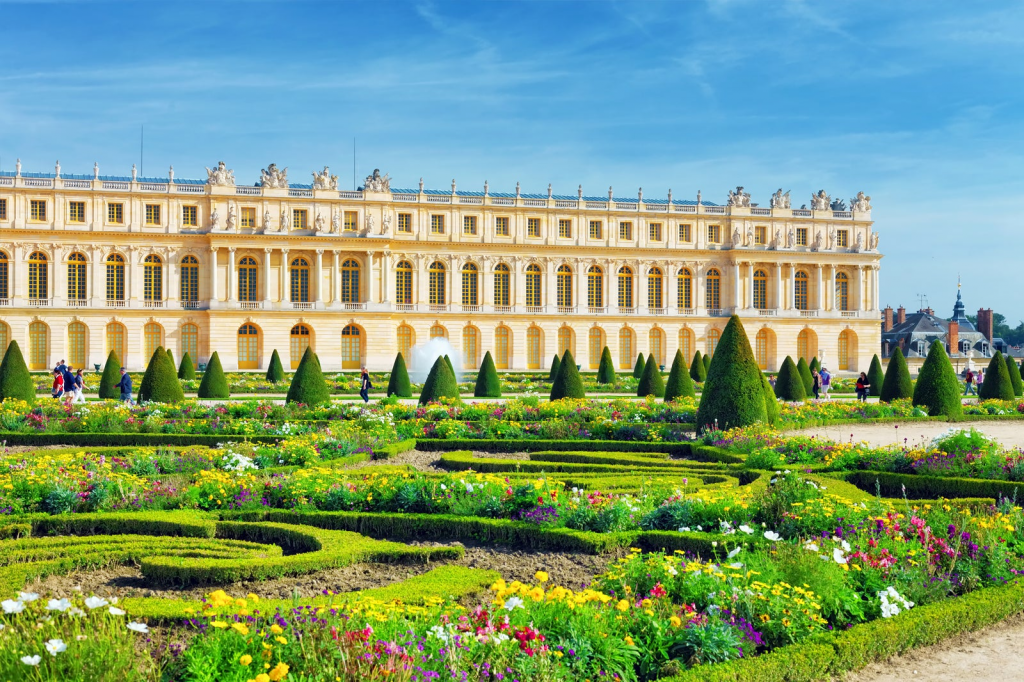
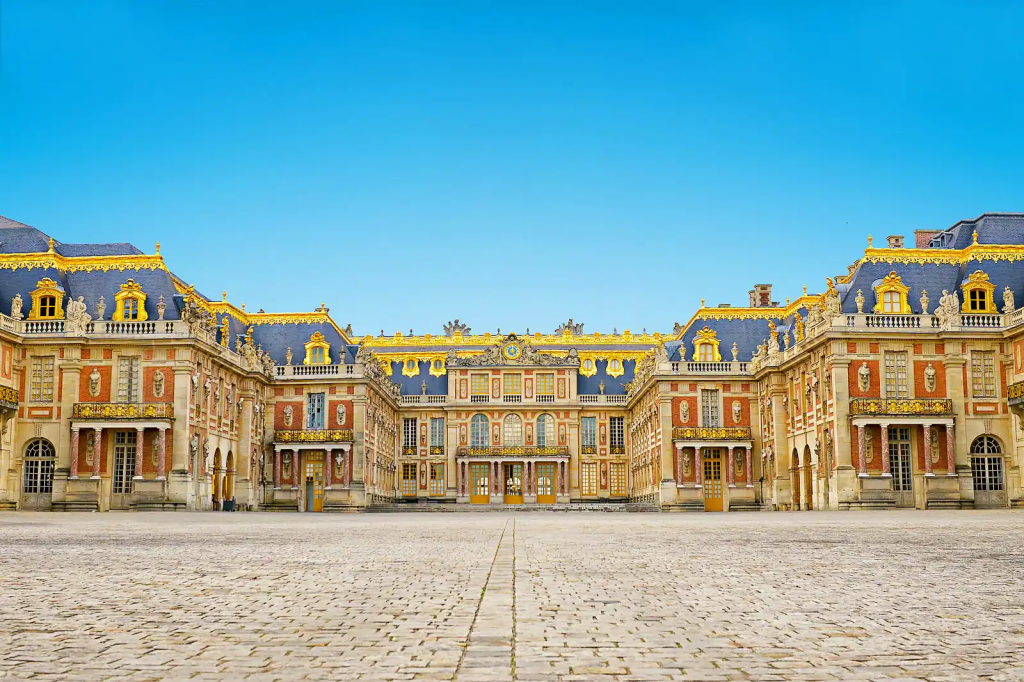
Today, guests to the Palace of Versailles may experience the splendour and extravagance of the French court, from the elaborate ballrooms and the breathtaking Hall of Mirrors to the lush gardens and endless fountains. It’s a location that will astound you and make you feel as though time has stood still.
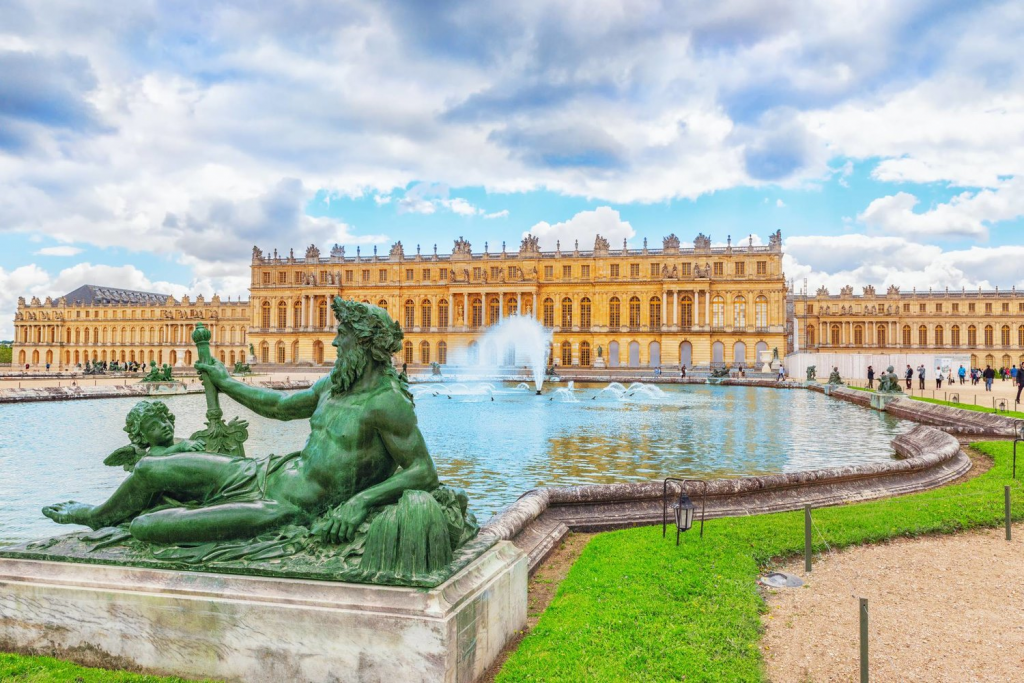
The Palace of Versailles is more than just a stunning structure, though. It serves as a reminder of the rich cultural legacy still present in France today as well as a symbol of the authority and stature of the French monarchy. The Palace of Versailles is a must-see location for anyone who enjoys beauty and opulence, regardless of their interest in history, architecture, or both.
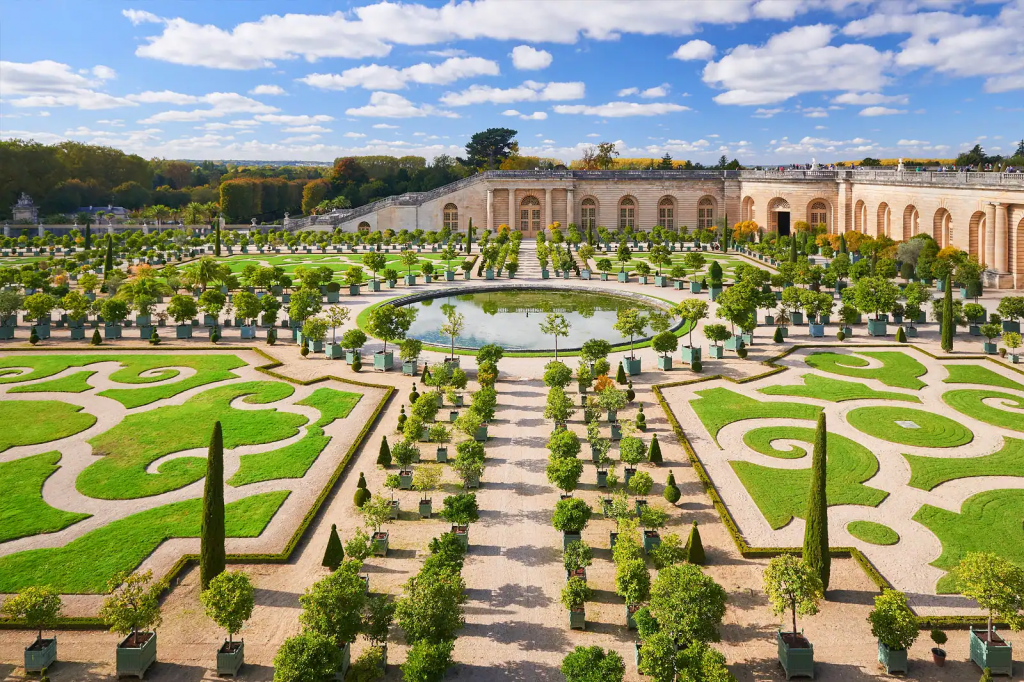
Christ the Redeemer – A Monument of Love and Hope
Nestled atop Corcovado Mountain in Rio de Janeiro, Brazil stands one of the most iconic landmarks in the world – Christ the Redeemer. The statue of Jesus Christ, with arms outstretched, welcoming all who gaze upon it, has become a symbol of hope, love, and peace for millions of people across the globe.

The idea for a statue of Christ on Corcovado Mountain was first proposed in the late 1800s by a Catholic priest named Pedro Maria Boss. However, it wasn’t until 1921 that construction on the statue began. The project was funded by donations from Brazilian citizens, as well as the Catholic Church, and took nine years to complete.
The statue itself is 98 feet tall, including its pedestal, and is made of reinforced concrete and soapstone. The statue’s arms stretch 92 feet wide, symbolizing the embrace of all people, regardless of race, religion, or nationality. The outstretched arms represent Christ’s love and acceptance of all people, while the gaze of the statue is said to be fixed on the city of Rio de Janeiro, reminding its citizens of the need for love, peace, and compassion.

Visitors to Christ the Redeemer are awestruck by the stunning views from the top of Corcovado Mountain, as well as the beauty and majesty of the statue itself. The statue has become a popular tourist destination, attracting millions of visitors every year. In 2007, it was even named one of the New Seven Wonders of the World.
But for many, Christ the Redeemer is more than just a tourist destination. It is a place of spiritual significance, a symbol of hope, and a reminder of the love that exists in the world. For those who have stood before the statue, it is an unforgettable experience – one that fills the heart with peace, love, and a sense of belonging.
In a world that often seems filled with hatred, violence, and division, Christ the Redeemer serves as a beacon of hope. It reminds us of the power of love and compassion, and the importance of embracing all people, regardless of their differences. For this reason, Christ the Redeemer will always be more than just a statue – it will be a monument to the love that exists within us all.
The Rose-Red City: Uncovering the Secrets of Petra, Jordan
Petra, a city carved in stone, is a true wonder of the ancient world. It’s not just the intricate architecture, the magnificent temples, and the iconic Treasury building that leave visitors in awe, but also the sheer scale of the city and the rugged beauty of its location in the Jordanian desert.

Petra was established as the capital of the Nabataean kingdom around the 6th century BCE and flourished as a hub for trade, particularly for the Silk Road that connected China to the Mediterranean. The Nabataeans were master architects and engineers, and they created a unique city that was both practical and stunning, with towering temples and grand tombs carved right into the red sandstone cliffs.
The Treasury, also known as Al-Khazneh, is Petra’s most famous monument and is a testament to the skill and creativity of the Nabataean builders. The façade of the Treasury is ornately decorated with columns, pediments, and statues, and is believed to have served as a temple or as a royal tomb. Visitors to Petra often stand in awe at the Treasury, marveling at how the Nabataeans were able to create such a magnificent structure in a remote desert location.
Petra was rediscovered in the 19th century by Swiss explorer Johann Ludwig Burckhardt, and since then it has become one of the most popular tourist destinations in the world. In 1985, Petra was declared a UNESCO World Heritage Site, and in 2007 it was named one of the New Seven Wonders of the World.
Visiting Petra today is an unforgettable experience. The city is accessible via a narrow, winding trail known as the Siq, and as visitors make their way through the narrow canyon, they catch glimpses of the towering monuments ahead. Once they reach the Treasury, they are greeted with a breathtaking view of the entire city, with its red sandstone cliffs rising up on all sides.
Whether you’re an archaeologist, a history buff, or just a lover of natural beauty, Petra is a place that will leave a lasting impression. It’s a city that reminds us of the ingenuity and creativity of our ancestors and the timeless appeal of architectural masterpieces. So if you’re ever in Jordan, don’t miss the opportunity to visit Petra and witness a true wonder of the world for yourself.
Khmer Wonders: A Visit to the Majestic Temple Complex of Angkor Wat
The enormous temple complex in Cambodia known as Angkor Wat is a remarkable work of architecture. Angkor Wat is unique due to its enormity, beautiful sculptures, and tremendous historical significance, but it’s also because of the incredible energy and spirit that permeates the site.
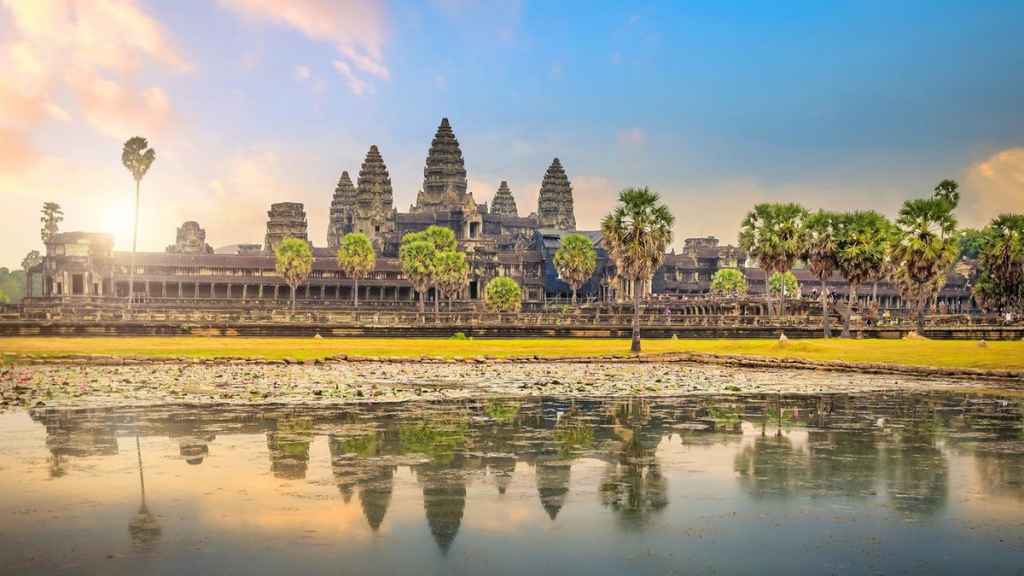
Angkor Wat was initially constructed as a Hindu temple honouring the god Vishnu in the early 12th century and eventually transformed into a Buddhist shrine. With a surface area of more than 162 hectares and a complex web of halls, courtyards, and towers, it is one of the greatest ecclesiastical structures in the world. The temple is much more spectacular in person because it is surrounded by a moat and a substantial wall.
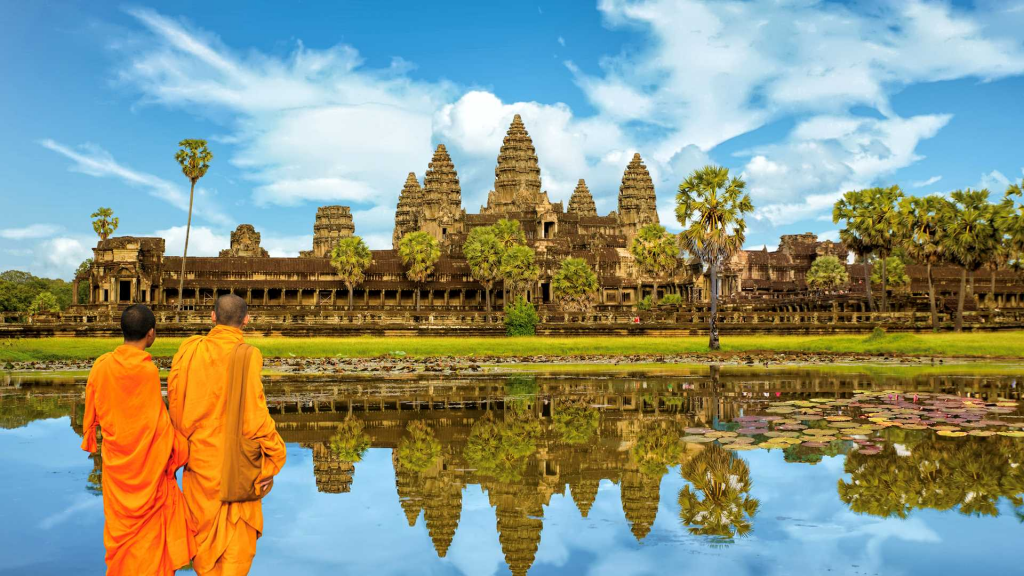
The artwork and carvings that adorn Angkor Wat’s walls and towers are one of the features that set it apart from other temples. The artwork of Angkor Wat is simply amazing, from the beautiful bas-reliefs that depict scenes from Hindu mythology to the intricate patterns and designs that cover every square inch of the temple. The carvings become even more amazing as the sun rises over the temple because the soft light makes them come to life.
For those who visit Angkor Wat, the atmosphere of the temple is truly unforgettable. There’s something about the stillness and quietness of the complex that makes it feel like a sacred place, and visitors often report feeling a sense of awe and wonder as they explore the temple’s many galleries and courtyards. It’s a place that invites reflection and contemplation, and it’s easy to see why so many people feel a deep spiritual connection to Angkor Wat.

Angkor Wat is currently one of the most well-liked tourist spots in Cambodia, drawing in millions of tourists each year from all over the world. It’s a location that provides a window into the past and present of one of the most intriguing civilizations in history, and it’s one that deserves to be visited. Angkor Wat is a location you won’t soon forget, whether you’re a historian, an archaeologist, or just someone who enjoys stunning architecture.
America’s Old Faithful: A Journey Through Yellowstone National Park
The first national park in the world, Yellowstone National Park, is a genuine jewel of the American West. Yellowstone is unique not only because of its geysers, hot springs, and profusion of species but also because of its beautiful beauty and sense of adventure.

Yellowstone spans three states and more than 2.2 million acres, with a varied panorama of woods, mountains, and plateaus. The geothermal elements of the park, however, really steal the show. Yellowstone is a geological paradise that features various hot springs and mud pots in addition to the famous Old Faithful geyser, which erupts on a regular basis.
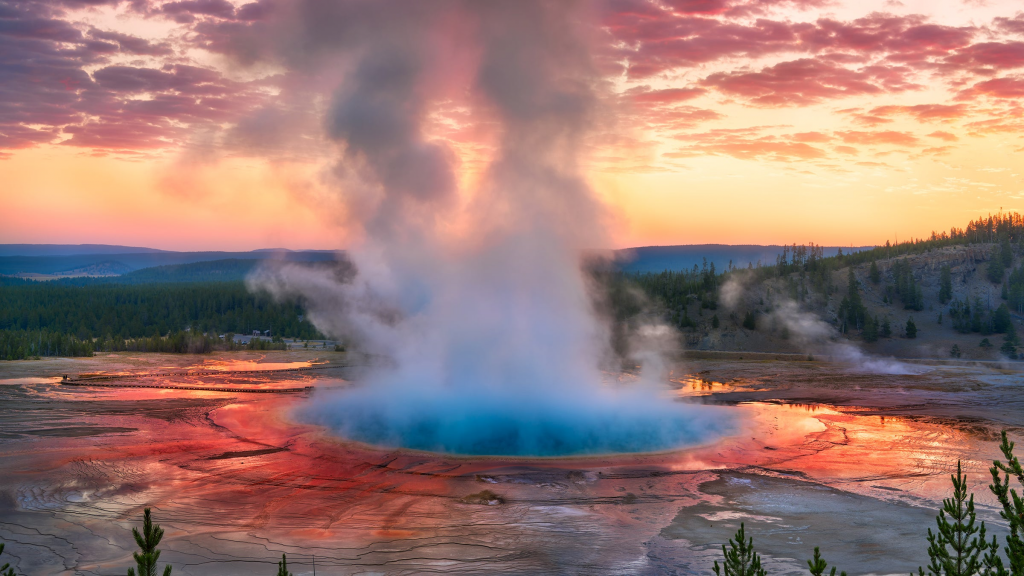
The quantity of wildlife in Yellowstone is one of the things that makes it so special. There is always something intriguing to see, from the stately elk and bison to the amusing river otters and cunning squirrels. And if you’re lucky, you might be able to spot one of the park’s more elusive residents, like a mountain lion or a grey wolf.
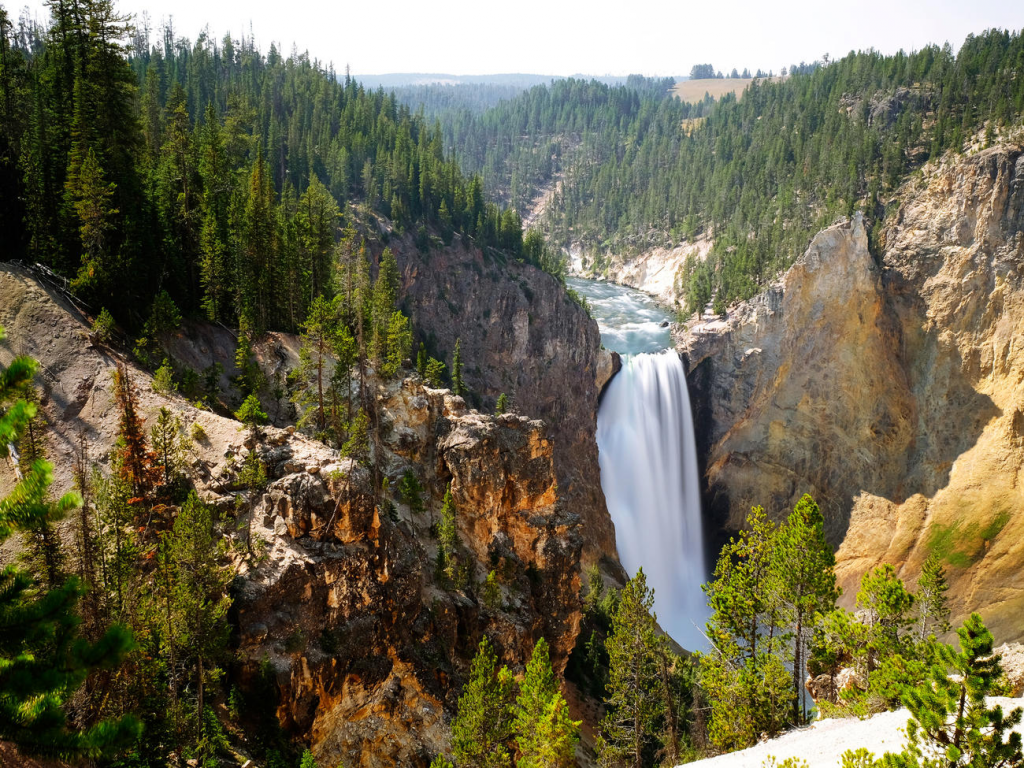
The experience of visiting Yellowstone is one that visitors will never forget. There is an air of adventure in the park, whether you’re wilderness camping, riding horses through the trails, or just taking a picturesque drive. It’s a location where you can get away from the bustle of daily life and engage with nature in a way that’s both peaceful and meaningful.

The Stairway to Heaven: Exploring the Banaue Rice Terraces in the Philippines
One of the world’s greatest ancient engineering achievements is the Banaue Rice Terraces, which were constructed more than 2,000 years ago by the native Ifugao people. The terraces, which are cut into the mountains and span an area of more than 10,000 hectares, are used to grow rice and other crops. As a result, a beautiful scene of stepped tiers that seem to reach the sky is created.

The Ifugao people’s strong ties to the land and their ancestors are one of the elements that make the Banaue Rice Terraces so special. The terraces serve as a representation of the community’s history and culture in addition to being a source of food and revenue. Visitors to the terraces may easily see why the Ifugao people are so proud of this amazing technical and agricultural achievement.

The pleasure of seeing the Banaue Rice Terraces will never be forgotten. You’ll be astounded by the splendour and beauty of the terraces from the time you arrive, and you’ll be in awe of what the Ifugao people were able to create. There is something wonderful about this place that will stay with you long after you leave, whether you’re taking a guided tour, trekking the trails, or just taking in the scenery.

The Banaue Rice Terraces are now regarded as one of the Philippines’ most significant natural and cultural landmarks and a UNESCO World Heritage Site. They are a location that provides a window into the past and present of one of the most intriguing civilizations in history, and they are a location that ought to be visited. So be sure to include the Banaue Rice Terraces on your agenda if you ever find yourself in the Philippines.

Maya Mysteries: A Visit to the Majestic Ruins of Chichen Itza
The ruins of Chichén Itzá, which once served as the epicentre of the strong Mayan civilisation, stand as a tribute to this great people’s inventiveness and accomplishments. Chichén Itzá is a destination that will astound you, from the imposing Temple of Kukulcan, better known as El Castillo, to the Great Ball Court, where players would engage in a high-stakes game of pok-ta-pok.

The ancient Mayans’ close ties to the earth and its deities are one of the reasons that made Chichén Itzá so special. The temples and pyramids of Chichén Itzá served as more than simply places for religious rituals; they also served as astronomical observatories and timekeepers for the Mayans, who utilised them to keep track of the motions of the planets and stars.
Visitors to Chichén Itzá will never forget their experience. You’ll be astounded by the size and magnificence of the ruins the instant you arrive, and you’ll feel a connection to the prehistoric inhabitants. There is something unique about this location that will stay with you long after you leave, whether you are enjoying a guided tour, exploring the site independently, or simply taking in the scenery.
The Grandest Canyon: A Hike Through the Majestic Grand Canyon
One of the most well-known natural wonders in the world is the Grand Canyon, and for good reason. The Colorado River carved the canyon over millions of years, and it stands as a towering and vibrant tribute to the power of erosion and time. The Grand Canyon is a spectacle that will astound you whether you are seeing it from the rim or venturing deep inside.
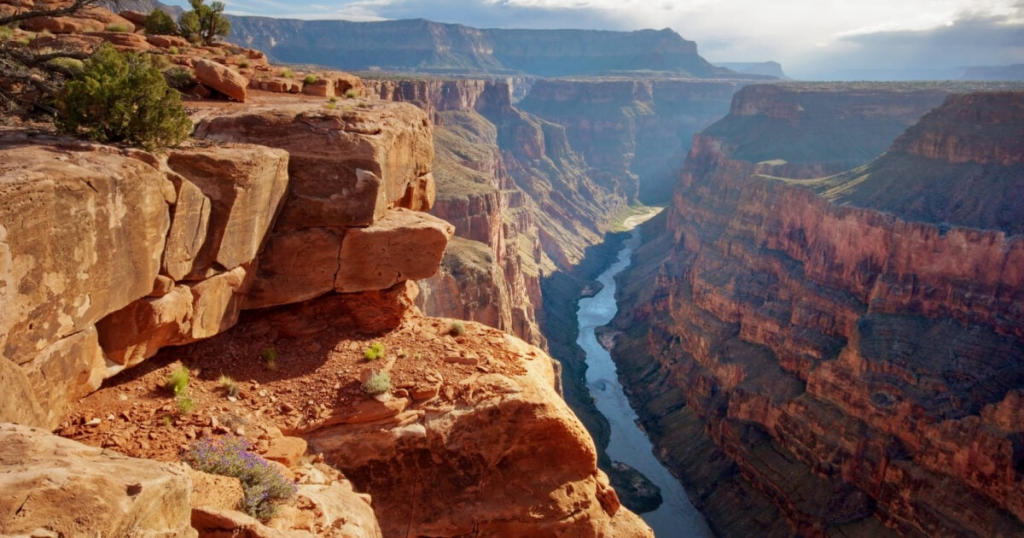
The Grand Canyon’s indigenous people have a strong bond with the earth, which is one of its many distinctive features. The canyon has always been a source of spiritual and cultural significance, from the ancient Puebloans to the contemporary Navajo and Hopi tribes.
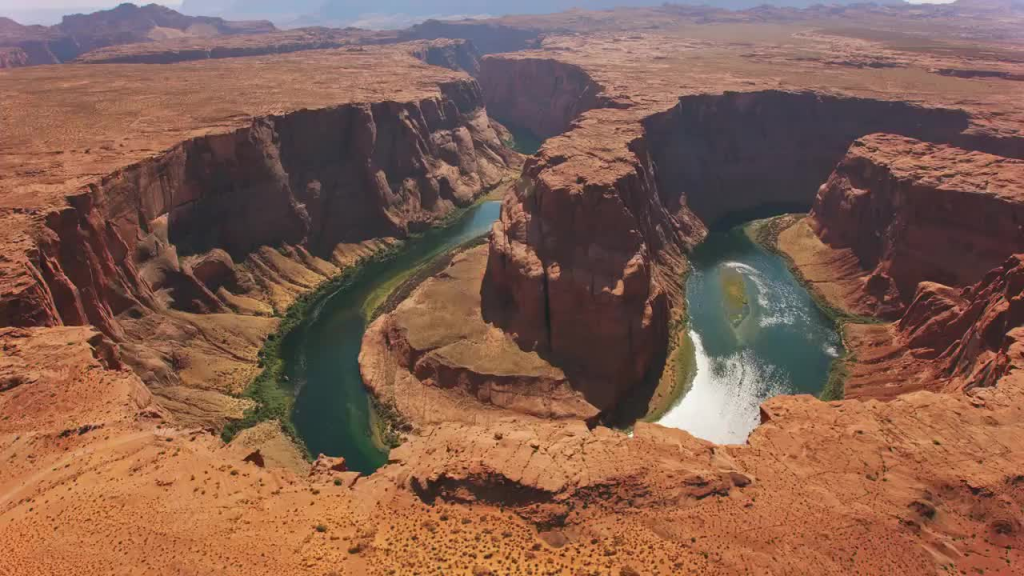
The Grand Canyon is a really unique experience for anybody who visits. You’ll be astounded by the size and grandeur of the canyon the instant you arrive, and you’ll feel a connection to the place and its past. There’s something wonderful about this location that will linger with you long after you leave, whether you’re taking a scenic drive, hiking one of its many paths, or just taking in the view.

The Bay of Descending Dragons: A Cruise Through Halong Bay, Vietnam
Halong Bay is a breathtaking natural wonder located in Vietnam. With its emerald waters, towering limestone cliffs, and lush tropical islands, it’s no wonder that this UNESCO World Heritage site attracts millions of visitors every year.

But there’s much more to Halong Bay than meets the eye. For starters, its name translates to “descending dragon bay,” which is rooted in a local legend about a dragon that plunged into the water and created the islands. This myth adds to the otherworldly feel of the place, making it seem as if you’ve stepped into a fantasy land.
The towering cliffs that spring up out of the ocean like sentinels will take your breath away as you cruise through the bay. They appear much more beautiful because of the lush flora that covers them. Around the bay, you may see fishing towns where the residents have long coexisted peacefully with the water.

There are several boat options available, making it one of the greatest ways to see Halong Bay. You can choose between a multi-day excursion that takes you to the more isolated areas of the bay and a leisurely day journey. In either case, you’ll have breathtaking views of the bay and the opportunity to go swimming in its crystal-clear waters.

Cat Ba Island, the largest island in the bay and a well-liked location for hiking and rock climbing, is one island that shouldn’t be overlooked. The Cat Ba National Park, a must-see for nature lovers, is also located there. Monkeys, civets, and more than 60 different species of birds are among the vast range of flora and fauna that call the park home.
Let’s not forget the cuisine, of course. There is no better way to savour the seafood that is famous for Halong Bay than on a floating restaurant in the water. Fresh daily catches including squid and shrimp are perfectly prepared and served with rice, regional herbs, and spices.
- Mara Vorhees. (Apr 29, 2015). Moscow’s Red Square [online]. Lonely Planet. https://www.lonelyplanet.com/articles/moscow-e2-80-99s-red-square
- MC Dean. (Feb 23, 2015). Design Lessons from the Sydney Opera House [online]. Medium. https://medium.com/designing-atlassian/design-lessons-from-the-sydney-opera-house-7e3c6bd240
- Elissa Blake. (Fri 1 Jul 2022). Better than we dared imagine: Sydney Opera House unveils its ‘miracle’ new concert hall [online]. The Guardian. https://www.theguardian.com/australia-news/2022/jul/02/better-than-we-dared-imagine-sydney-opera-house-unveils-its-miracle-new-concert-hall
- Natasha Geiling. (May 28, 2014). Vivid Sydney Art Festival [online]. Smithsonianmag. https://www.smithsonianmag.com/travel/vivid-sydney-art-festival-180951572/
- Theresa Machemer. (July 13, 2020). Turkey Turns Hagia Sophia Museum into Mosque, Drawing Criticism [online]. Smithsonianmag. https://www.smithsonianmag.com/smart-news/turkey-turns-hagia-sophia-museum-mosque-drawing-criticism-180975300/
- Kristin Romey. (July 10, 2020). Hagia Sophia Stripped of Museum Status, Paving Way for Mosque [online]. National Geographic. https://www.nationalgeographic.com/history/article/hagia-sophia-stripped-museum-status-paving-way-mosque
- Palace of Versailles [online]. Britannica. https://www.britannica.com/topic/Palace-of-Versailles
- Palace of Versailles [online]. Hotels.com. https://ca.hotels.com/go/france/palace-of-versailles
- Brazil’s World Famous Christ the Redeemer Reopens After a Hiatus of 5 Months [online]. Times of India. https://timesofindia.indiatimes.com/travel/travel-news/brazils-world-famous-christ-the-redeemer-reopens-after-a-hiatus-of-5-months/articleshow/77608567.cms
- Reasons Why Christ the Redeemer Statue is So Popular [online]. ThoughtCo. https://www.thoughtco.com/reasons-why-christ-the-redeemer-statue-is-so-popular-4123653
- National Geographic Staff. (July 4, 2018). Petra, Jordan [online]. National Geographic. https://www.nationalgeographic.com/travel/world-heritage/article/petra-jordan
- National Geographic Staff. (September 26, 2018). Angkor [online]. National Geographic. https://www.nationalgeographic.com/travel/world-heritage/article/angkor
- Joe Yogerst. (April 12, 2019). Yellowstone National Park [online]. National Geographic. https://www.nationalgeographic.com/travel
Big events to look forward to over the coming decades
NASA’s Artemis Program
The Artemis program is a NASA program that aims to return humans to the Moon by 2024. The program was announced in 2017 by the Trump administration as a way to establish a sustainable presence on the lunar surface and to use the Moon as a stepping stone for future missions to Mars.
The program’s main goal is to land the first woman and next man on the lunar surface by 2024, using the new Artemis lunar lander. This lander will be able to transport astronauts from lunar orbit to the surface of the Moon, and will be powered by a new generation of solar electric propulsion. The lander will also be able to transport science payloads and other equipment to the lunar surface.
In addition to landing astronauts on the Moon, the Artemis program also includes plans for the establishment of a long-term lunar base. This base will be used to conduct scientific research, test new technologies, and serve as a jumping-off point for future missions to Mars and other destinations in the solar system.
The Artemis program also includes plans for the development of new technologies, such as the use of in-situ resource utilization (ISRU) to extract water and other resources from the lunar surface, and the use of nuclear-powered systems to provide power and propulsion for missions to the Moon and beyond.
To achieve these goals, NASA is working with a variety of partners, including private companies, international space agencies, and universities. NASA is also developing new partnerships with other countries to share resources, knowledge, and expertise.
The Artemis program is a ambitious and challenging one, but NASA is confident that it will achieve its goals and establish a sustainable human presence on the lunar surface in the near future.

Most Interesting Facts About Space
Proxima Centauri is a red dwarf star located in the constellation Centaurus, 4.22 light-years away from Earth. It is part of a triple star system, with Alpha Centauri A and B being the other two stars. Scientists have discovered an exoplanet orbiting Proxima Centauri, making it the closest exoplanet to Earth and a prime target for study in the search for extraterrestrial life.


The Voyager 1 probe was launched in 1977 and became the first artificial object to leave our solar system in 2012. It is still in operation today and continues to transmit data back to Earth.

The Great Red Spot on Jupiter is a gigantic storm, larger than the size of Earth. It has been observed for over 350 years and is believed to be a giant anticyclone.

The most distant object ever observed is GN-z11, a galaxy located around 13.4 billion light-years away. It was observed by the Hubble Space Telescope in 2016. The galaxy is located in the early universe and is one of the first galaxies to have formed.

The Parker Solar Probe is a spacecraft launched by NASA in 2018 to study the sun. It is currently travelling at a speed of around 430,000 miles per hour, making it the fastest known object in the universe. The probe is designed to withstand the intense heat and radiation of the sun’s corona and will make multiple close approaches to the sun over the next several years to study the solar wind and the sun’s magnetic field.

TON 618 is a black hole located in the center of a galaxy around 215 million light-years away. It has a mass around 66 billion times that of the sun, making it the largest known black hole. Black holes are extremely dense objects that are formed when massive stars die and their cores collapse. The immense gravitational pull of a black hole is so strong that nothing, not even light, can escape it.

“Two Planets in Proxima Centauri System” (n.d.). Sci News. Retrieved from https://www.sci.news/astronomy/two-planets-proxima-centauri-system-08534.html
CNN. (2013, September 12). Voyager: The spacecraft that’s still sending back data from the edge of the solar system. CNN. Retrieved from https://www.cnn.com/2013/09/12/tech/innovation/voyager-solar-system/index.html
Gates, A. (2019, November 15). Jupiter’s Great Red Spot is not disappearing. Astronomy.com. Retrieved from https://astronomy.com/news/2019/11/jupiters-great-red-spot-is-not-disappearing
“Parker Solar Probe” (n.d.). NASA Solar System Exploration. Retrieved from https://solarsystem.nasa.gov/missions/parker-solar-probe/in-depth/
Rice, A. (n.d.). “This is the largest a black hole could ever grow.” Medium. Retrieved from https://medium.com/predict/this-is-the-largest-a-black-hole-could-ever-grow-3c88b94ea5f8
Titanic Conspiracy Theories
#1: The Titanic was deliberately sunk
The Titanic/Olympic switch conspiracy theory is a theory that suggests that the RMS Titanic, which famously sank in the North Atlantic in 1912, was actually its sister ship, the RMS Olympic. According to this theory, the owners of the Titanic, the White Star Line, intended to sink the Titanic in order to collect insurance money and salvage the Olympic, which had been damaged in a previous accident.
This theory is based on several pieces of supposed evidence, such as the fact that the Titanic and the Olympic were nearly identical ships, and that there were similarities in the damage that the Titanic sustained and the damage that the Olympic had sustained earlier. Additionally, some conspiracy theorists point to alleged discrepancies in the testimony of survivors and the official inquiry into the sinking of the Titanic as evidence that the Titanic and the Olympic were switched.
The theory also holds that White Star Line swapped the Titanic and Olympic in order to cash in on the Titanic’s insurance policy. Since the Olympic had suffered several accidents in its past, the owners of the White Star Line were looking to get rid of the ship and collect the insurance money. They took advantage of the opportunity to sink the Titanic and collect the insurance money.
Additionally, the theory suggests that the White Star Line knew about the existence of the icebergs ahead of time but chose not to take any actions to avoid them. They also point to the fact that the Titanic was traveling at an alarming speed, which would have been necessary to sink the ship in the short time frame, and the fact that the crew was not trained to handle such an emergency.
The theory also states that the Titanic was not built for the North Atlantic voyage and was not equipped to handle the harsh weather conditions. The Titanic’s sister ship, the Olympic, was built to handle the North Atlantic voyage and was equipped with the necessary safety features.


#2 The Titanic Was Deliberately Sunk
The Titanic conspiracy theory that suggests that the ship was deliberately sunk posits that the sinking of the RMS Titanic in 1912 was not an accident, but was instead an intentional act. This theory suggests that the ship’s owners, the White Star Line, or another party, may have had a motive to sink the Titanic, such as collecting insurance money or as an act of sabotage.
One aspect of this theory is that the Titanic was travelling at an alarming speed, which would have been necessary to sink the ship in the short time frame, despite the fact that the crew was not trained to handle such an emergency. Some conspiracy theorists point to this as evidence that the sinking was intentional, suggesting that the White Star Line or another party may have deliberately put the ship in a dangerous situation in order to sink it.
Another aspect of this theory is that White Star Line knew about the existence of the icebergs ahead of time but chose not to take any actions to avoid them. They also point to the fact that the Titanic was not built for the North Atlantic voyage and was not equipped to handle the harsh weather conditions and thus the ship was not suitable for the voyage it was undertaking.
Additionally, some conspiracy theorists point to alleged discrepancies in the testimony of survivors and the official inquiry into the sinking of the Titanic as evidence that the sinking was intentional. Some believe that the stories of the survivors and the official account of the disaster are not consistent, and that there may have been a cover-up of the true events of the sinking.
Furthermore, the theory suggests that the White Star Line had financial motives to sink the Titanic, such as collecting insurance money on the ship and its valuable cargo, or to eliminate competition in the transatlantic passenger market.
#3. The Coal Fire Theory
The Titanic conspiracy theory that suggests a coal fire, not an iceberg, sank the Titanic is a theory that suggests that the sinking of the RMS Titanic in 1912 was not caused by an iceberg, but was instead caused by a coal bunker fire that had been burning on board the ship for several days before the sinking. According to this theory, the fire weakened the ship’s structure, making it more susceptible to damage from the iceberg, and that the crew was aware of the fire but kept it a secret in order to avoid panic among the passengers.
This theory is based on several pieces of supposed evidence, such as alleged discrepancies in the testimony of survivors and the official inquiry into the sinking of the Titanic, and the fact that the Titanic was travelling at an alarming speed, which would have been necessary to sink the ship in the short time frame. Additionally, some conspiracy theorists point to the fact that the crew was not trained to handle such an emergency as evidence that the sinking was caused by a coal fire.
The theory also holds that the crew knew about the fire but kept it a secret in order to avoid panic among the passengers. They also point to the fact that the Titanic was not built for the North Atlantic voyage and was not equipped to handle the harsh weather conditions, which made the ship more susceptible to damage from the coal fire.

A & E Television Networks. (n.d.). Titanic Sinking Conspiracy Myths: J.P. Morgan and the Olympic. History.com. Retrieved January 17, 2023, from https://www.history.com/news/titanic-sinking-conspiracy-myths-jp-morgan-olympic
Kucherawy, J. (2021, December 2). The Titanic Never Sank and Other Conspiracy Theories Surrounding the Tragic Ocean Liner. Lethbridge News Now. Retrieved from https://lethbridgenewsnow.com/2021/12/02/the-titanic-never-sank-and-other-conspiracy-theories-surrounding-the-tragic-ocean-liner/
Sengupta, S. (2017, January 3). A Coal Fire May Have Doomed the Titanic, a New Study Suggests. The New York Times. Retrieved from https://www.nytimes.com/2017/01/03/world/europe/titanic-coal-fire-iceberg.html
The Biggest Loser
One of my favorite shows during my teenage years was “The Biggest Loser,” a reality show where obese people attempt to lose the most weight. I was a slightly overweight teenager when I started watching. Just seeing the obese individuals shed tens of pounds throughout the season was so motivating. My thinking was if these individuals could shed all that weight, I could too with a lot of physical effort.
But what you see on television does not reflect reality. “The Biggest Loser” and NBC, the television channel that produces and broadcasts the show, goes out of their way to make sure the harsh reality doesn’t come out. Participants were reportedly forbidden from speaking out and could face fines of up to a million dollars.
But what could be so bad about a show where people try to lose weight?
The New York Post had interviewed Kai Hibbard, who was a contestant in 2006. Like so many millions of people, she always struggled to lose weight despite trying dozens of diet and exercise plans.
“The whole f- -king show,” she says today, “is a fat-shaming disaster that I’m embarrassed to have participated in.”
The problem with the show is that it oversimplifies what it takes to exercise. The trainers just assume with exercise, anyone can lose weight. Thus, the fact that the contestants were overweight was because of their own fault. And if you look at the show at face value, it seems almost true.
Images like this were used to spread good messages about the show. One could see the transformation and feel inspired.
It’s no wonder then why the show brought in 100 million dollars in revenue.
But what’s shown was specifically made for television. Behind the scenes, it’s a horror show.
The non-disclosure agreements the contestants have to sign are extremely strict. When not filming, contestants have to stay in their hotel room at all times and are monitored by production assistants. No communication is allowed whatsoever with the outside world.
On the show, it seems like all the contestants do is exercise in order to lose that weight. The reality is what you see is actually quite true: the contestants exercise for dangerous lengths of five to eight hours. That kind of workout is absolutely unsustainable.
Their diet plans were also dramatically changed. The foods they ate were not healthy fruits and vegetables. They were energy drinks, fat-free cheese, and jello. The intention was to severely cut down their caloric restriction while still providing enough energy to exercise.
When faced with such extreme conditions, weight is lost. It’s not uncommon to see 30 pounds in a week for example. But the long term consequences are not good. With such a loss in calories, malnourishment is common. Kidney damage happened to the winner of the first season. In 2009, two contestants were hospitalized. Hair loss, insomnia, joint and muscle damage were all results of extreme exercise.
The support for the contestants isn’t any better. Trainers see all of this exercise as a good thing, and that only fat will kill them. The long term physical damage is just temporary pain one has to go through to live a happy and healthy life. Production wants to show a positive image of weight loss and thus ignore any complaints or warnings.
So is all the suffering worth it? Did the slimmed down contestants have an amazing thin life?
No. Sadly no. Here we can look at the story of Danny Cahill. He lost an incredible 239 pounds in 7 months of the show.
The side by side comparison is just shocking. At first glance, that kind of weight loss can encourage anyone demotivated to start exercising again. He went from 430 to just 191 pounds. Researcher Kevin Hall at the National Institutes of Health was curious about the results after the cameras stopped rolling. He wanted to follow them long term and see what extreme weight loss would do to the body. What they found is surprising and demotivating to millions who wanted to gain weight.
When the overweight contestants started, their metabolism was normal for their BMI. When they started exercising a lot and eating almost nothing, their metabolism slowed down to keep them alive. This was not surprising: the body adapts to the changing condition. What should have happened next is that their metabolism would change to a normal state for their new BMI. But what the researchers found was that their metabolism continued to remain low. Given how this extreme diet is unsustainable outside of reality TV, the contestants started to gain back their weight. Their metabolism still remained low. When 50 or 100 pounds were gained, metabolism was still lower than average. To the researchers, it seemed like the body was fighting back to regain the pounds.
Biology is an unavoidable part of weight loss that a lot of us don’t want to face. While we want to believe that weight loss can occur under our own control, we have to face the fact that a lot of our weight was caused by genetics. The body will fight back to gain its original shape.
We shouldn’t thus blame ourselves for being fat. Yes, it’s important to eat healthy and exercise regularly. But our society’s obsession with being thin does haunting damage to those who have tried everything to lose weight but just can’t as a result of genetics.
Callahan, M. (2016, January 11). The brutal secrets behind ‘the biggest loser’. New York Post. Retrieved from https://nypost.com/2015/01/18/contestant-reveals-the-brutal-secrets-of-the-biggest-loser/
Costco’s Cheap Hot Dogs
Costco is famous for its hot dogs. The fact that it’s still $1.50 is an absolute steal. If you just eat Costco hot dogs for the rest of your life, you can feed yourself on less than $5 a day. I mean sure, you’ll probably die of a heart attack given that the hot dog offers little nutritional value whatsoever. But it’s still seriously so cheap.
The history of the dog is extremely interesting. Despite all the inflation, the price of the hot dog has remained at the same price since the 1980s. We are paying the same amount for a product as 40 years ago, back when wages were much less than what they were now.
Now, $1.50 is ridiculous and one may think there’s no way Costco is making money off this. That is true: Costco loses money on each and every single hot dog sold.
This tactic is known as a loss leader: Costco intentionally prices this product low in order to attract customers. The warehouse is huge and customers are likely to buy a good deal of tires, clothes, lawn mowers or whatever crazy else Costco sells.
The price hasn’t always been a done deal. Many times, there were proposals to increase the price. But Co-founder Jim Sinegal is memorably quoted as saying “If you raise the effing hot dog, I will kill you.” Ah, a death threat to keep a weiner at a cheap price. Funny.
Pomranz, M. (2020, September 22). Why is Costco’s Hot Dog Combo still so cheap? A death threat. Food & Wine. Retrieved from https://www.foodandwine.com/news/why-costco-hot-dog-still-dollar-fifty